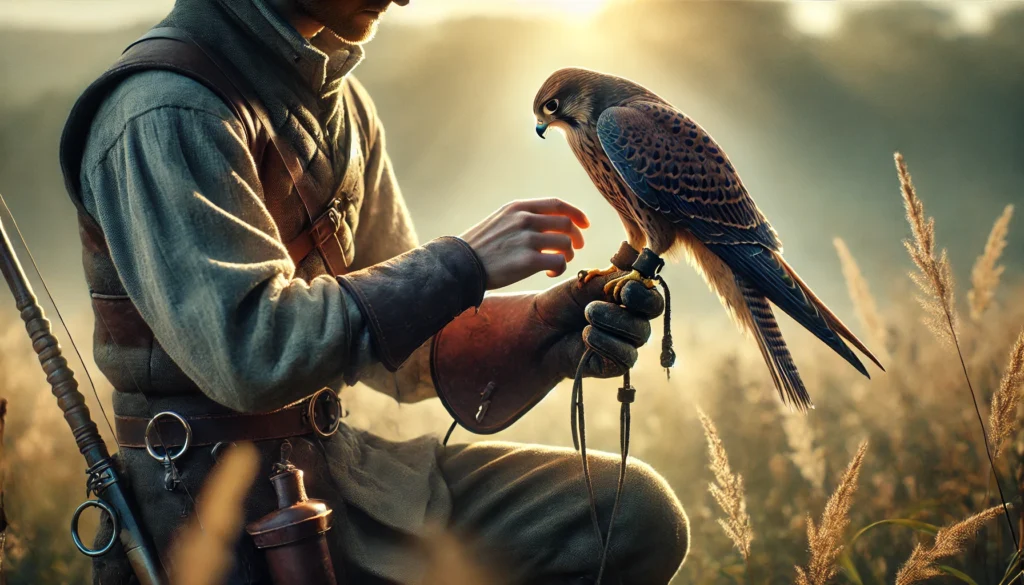Key Insights on White-Rumped Falcons
- Appearance and Identification: White-rumped falcons are small and striking birds of prey with a distinctive white rump that makes them easy to identify in the wild.
- Habitat Preferences: These falcons prefer forested areas and are commonly found in open woodlands, savannas, and areas near water bodies.
- Diet and Hunting Behavior: Their diet primarily consists of insects, small mammals, and birds. They are agile hunters with exceptional flying skills, allowing them to catch prey both in the air and on the ground.
- Breeding and Nesting: White-rumped falcons typically nest in tree cavities or abandoned nests of other birds. They lay a small clutch of eggs, and both parents are involved in feeding the chicks.
- Conservation Status: While not currently endangered, these falcons face threats from habitat loss and human activities. Conservation efforts are important to ensure their populations remain stable.
- Unique Behaviors: The white-rumped falcon is known for its distinctive flight style, which includes rapid wing beats and short glides. They often perch conspicuously, making them more visible than other falcon species.
- Importance in Ecosystem: As predators, they play a crucial role in controlling the populations of their prey, contributing to the balance of their ecosystem.
Remember, observing and learning about white-rumped falcons can be an exciting and educational experience. Whether you’re a budding ornithologist or just a nature enthusiast, these fascinating birds offer a window into the rich diversity of our natural world.
Discovering the Fascinating White-Rumped Falcons: The Hidden Gems of the Skies
Welcome to the enchanting world of Learn Falconry, where we bring to life the majestic wonders of falcons! Today, we’re diving into the captivating tale of the white-rumped falcons. Picture this: in the green, rolling hills of Ireland, not unlike our own vast skies, there exists a tiny, unseen treasure that proves to be a thrilling discovery – just like the white-rumped falcons in the vast avian world.
These birds, much like the hidden four-leaf clover in an Irish meadow, are rare and filled with stories begging to be told. So, why are white-rumped falcons worth your attention? Well, just like uncovering the lore of an ancient Irish castle, learning about these falcons uncovers secrets of nature’s splendor and our interconnectedness with it. But that’s not all; this article promises to share the unique characteristics, behaviors, and the vital role these falcons play in our ecosystem.
Imagine you’re about to embark on an adventure where each feathered friend you meet adds a sprinkle of magic to your journey. By sticking with us, not only will you become an advocate for these incredible birds, but you’ll also find yourself enchanted with every little detail revealed about the white-rumped falcons. Want to experience nature’s charm through the eyes of a falcon? Keep reading to become a part of this exciting adventure with us at Learn Falconry!
The Fascinating World of White-Rumped Falcons
White-rumped falcons are a unique and captivating species within the falconry world. Known for their distinctive white patches on their lower backs, these birds offer an array of intriguing characteristics and behaviors. In this post, we will delve into various aspects of the white-rumped falcon, a type of white-rumped species, and explore its significance in white-rumped falconry.
Understanding the White-Rumped Falcon
The white-rumped falcon (Polihierax insignis) is a small raptor known for its striking appearance. This bird gets its name from the white patches located on its lower back, just above the tail, which stand out against its dark feathers. These falcons exhibit swift and agile flights, making them fascinating subjects for bird watchers and falconers alike.
White-rumped falcons belong to the genus Polihierax, and they are typically found in the savannas and woodlands of Southeast Asia. Their diet primarily consists of small birds, insects, and occasionally small mammals, showcasing their adaptability and predatory skills.
White-Rumped Species in Falconry
White-rumped species, including the white-rumped falcon, have garnered interest in the falconry community. Falconry, the ancient practice of training birds of prey to hunt in cooperation with humans, sees the potential of these birds in both sport and hunting. Due to their size, speed, and striking appearance, white-rumped falcons are often favored by falconers looking for a challenging and rewarding experience.
Training a white-rumped falcon requires skilled techniques and specialized equipment. New and seasoned falconers can explore various training methods to successfully train these birds. Training sessions involve basic and advanced techniques, such as positive reinforcement and conditioning, ensuring that the falcon thrives in its new environment.
White-Rumped Falconry Equipment
The practice of white-rumped falconry calls for the right equipment. Essential gear includes falconry gloves, jesses and leashes, perches and stands, and other specialized items designed to ensure the safety and comfort of both the falconer and the bird. Proper equipment not only aids in training but also in the care and maintenance of the falcon. Falconers can access detailed guides on various types of equipment needed for white-rumped falcons, from hoods to GPS trackers.
Health and Nutrition for White-Rumped Falcons
Maintaining the health of a white-rumped falcon is crucial for its performance and well-being. Understanding the basic nutrition requirements, addressing common health issues, and providing regular preventative care are all fundamental aspects of caring for these falcons. It is important to provide a balanced diet, including essential nutrients and hydration, to keep the falcon in peak condition.
The Role of White-Rumped Falcons in Modern Falconry
White-rumped falcons continue to play an important role in modern falconry. As falconers look for innovative and sustainable practices, this species offers a blend of tradition and modern techniques. Whether for sport, hunting, or conservation efforts, white-rumped falcons exemplify the dynamic and evolving nature of falconry.
For beginners looking to enter the world of white-rumped falconry, it is advisable to start with an understanding of the basics’choosing the right falcon, acquiring the proper equipment, and learning from experienced falconers. By tapping into resources such as falconry clubs and educational programs, new falconers can gain the knowledge and skills needed to thrive in this unique and fascinating field. Explore more about the history and ethics of falconry to fully appreciate the rich heritage and responsibility that come with this practice.
Explore our comprehensive resources and join the intriguing world of white-rumped falconry today!
Fascinating Insights into the White-rumped Falcon
Welcome to Learn Falconry! Today, we’re diving into the world of the captivating White-rumped Falcon. These amazing birds boast a range of interesting attributes and behaviors that make them unique. Let’s explore them with data and examples.
General Information
- Scientific Name: Neohierax insignis
- Common Name: White-rumped Falcon
- Conservation Status: Near Threatened (NT)
- Distribution: Found in Southeast Asia, mainly in the lowland forests of Myanmar, Laos, Cambodia, Vietnam, and Thailand
- Habitat: This falcon prefers savannas, primary diptocarp forests, and mixed deciduous forests, typically below 915 meters above sea level
Physical Characteristics
| Characteristic | Description |
|---|---|
| Plumage | Males have a pale gray head, females have a bright rusty orange head and upper back |
| Wings | Slate gray in color |
| Breast and Upper Back | Pure white |
| Legs, Cere, and Eye Skin | Yellow to orange |
| Eye Color | Dark |
Behavior Habits
- Activity Pattern: Diurnal, which means they are active during the day and rest at night.
- Vocalizations: White-rumped Falcons have a variety of calls, such as high-pitched calls, soft “cheeps,” loud screeches, and even musical songs.
- Nesting: They often use old woodpecker holes for nesting. A typical clutch has at least two white eggs. Notably, both parents participate in incubating and caring for the young ones.
Eating Preferences
| Prey Type | Examples |
|---|---|
| Reptiles | Lizards |
| Insects | Cicadas, Grasshoppers |
| Other Prey | Small Birds, Frogs, Snakes |
They typically hunt by snatching prey from tree trunks, the ground, and foliage, with only a small amount of aerial hunting.
Conservation Status and Efforts
- Current Status: Near Threatened
- Population Trend: The population is declining mainly due to hunting and habitat loss.
- Conservation Efforts:
- Scientific Research: In-depth research is being conducted to understand better their challenges and needs.
- Habitat Conservation: Efforts are in place to protect and preserve their natural habitat.
- Education and Community Development: Increasing awareness and involving local communities are key strategies to help conserve raptors globally.
In summary, the White-rumped Falcon, with its defining features, intriguing behaviors, and pressing conservation needs, offers an enriching subject for those keen on bird watching and conservation. Stay tuned to Learn Falconry for more fascinating insights!
Final Thoughts on the Remarkable White-rumped Falcon
Exploring the incredible White-rumped Falcon, scientifically known as Neohierax insignis, provides insight into how special and unique this bird truly is. With its striking plumage’males showcasing a pale gray head and females flaunting a bright rusty orange head and upper back’alongside their slate gray wings and pure white breast and upper back, these birds are a sight to behold in their Southeast Asian habitats.
Primarily found in savannas and diverse forest types within Myanmar, Laos, Cambodia, Vietnam, and Thailand, the White-rumped Falcon thrives in regions below 915 meters above sea level. This diurnal bird is most active during daylight, using high-pitched calls, soft “cheeps,” and even musical songs to communicate.
Their diet consists mainly of reptiles, insects, small birds, frogs, and snakes, which they skillfully snatch from tree trunks, the ground, and foliage. Nesting in old woodpecker holes and caring meticulously for their young, both male and female falcons are deeply devoted as parents.
Despite their wonders, the White-rumped Falcon faces alarming challenges, being classified as Near Threatened due to hunting and habitat loss. Conservation efforts, including research, habitat preservation, and community awareness, are crucial to protecting this magnificent species.
By understanding and supporting these remarkable birds, we can cherish and safeguard the White-rumped Falcon for future generations. Their survival not only enriches our natural world but also symbolizes the delicate balance of our ecosystems. Let’s continue to learn, respect, and contribute to the conservation of these dazzling raptors.



